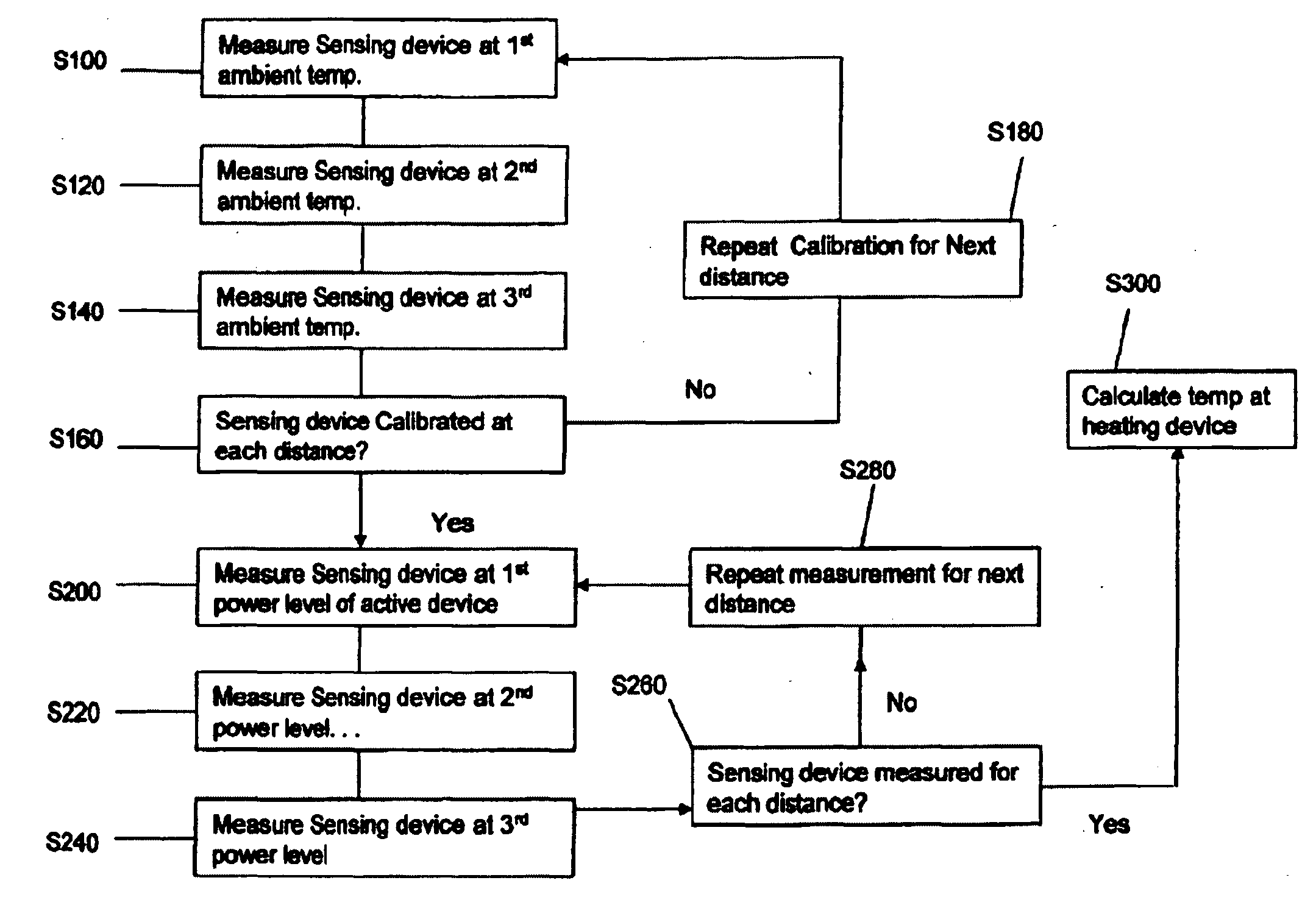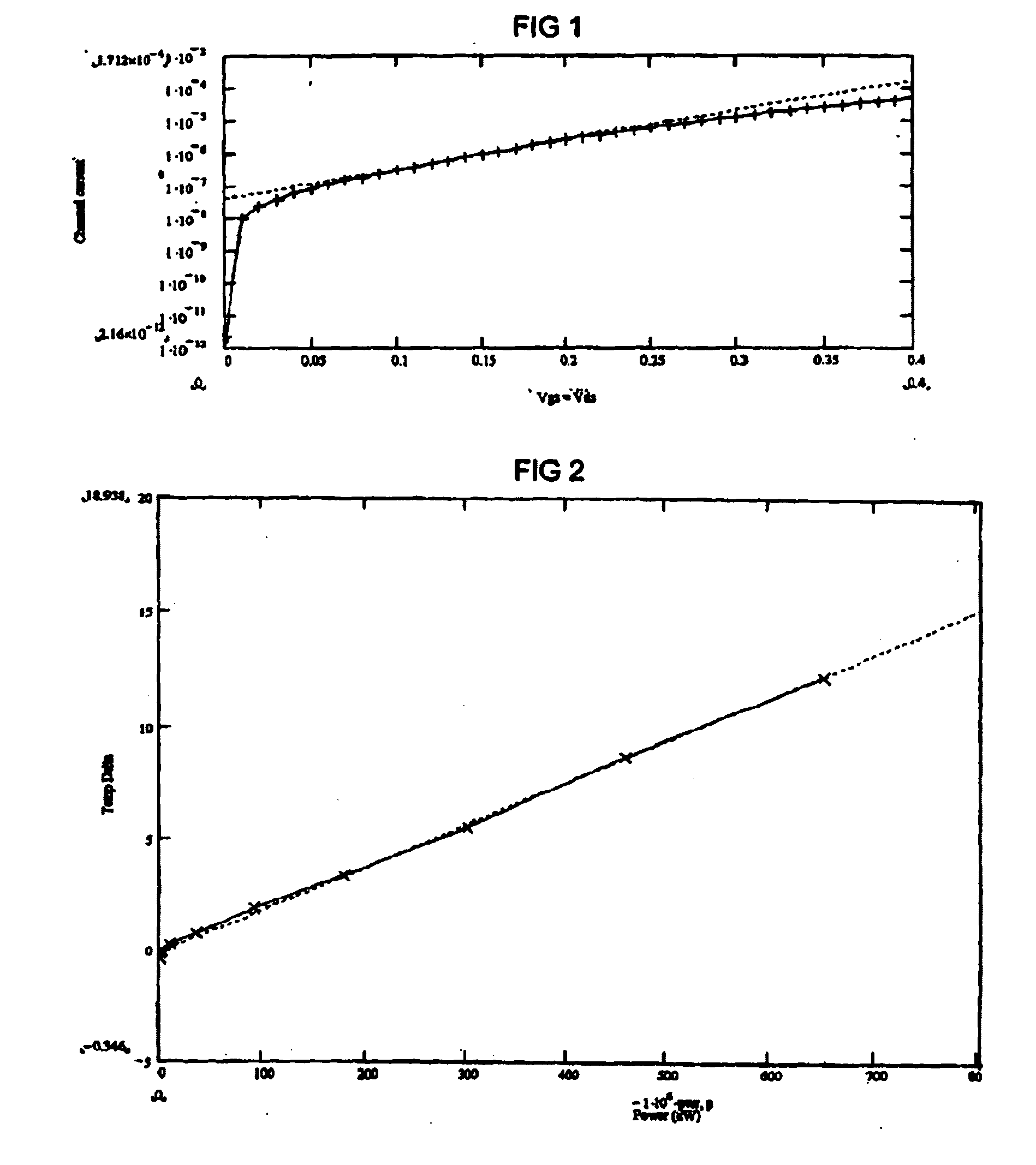SELF HEATING MONITOR FOR SiGe AND SOI CMOS DEVICES
a self-heating monitor and soi cmos technology, applied in the direction of instruments, nuclear engineering, nuclear elements, etc., can solve the problems of increasing the device's susceptibility to thermal effects, poor thermal conductivity properties, and extremely limited thermal pathways on the island of sig
- Summary
- Abstract
- Description
- Claims
- Application Information
AI Technical Summary
Problems solved by technology
Method used
Image
Examples
Embodiment Construction
[0024] The invention is directed to determining the temperature of an active region of a device fabricated using SGOI technology as a function of electrical power through the device. Such information may be used to characterize the effect of temperature on the performance characteristics of the device. This information may be utilized by design engineers to predict device performance during the circuit layout process, as a function of temperature, and to accommodate such temperature effects in the circuit design.
[0025] To reliably measure the temperature of a semiconductor device, and thereby determine the effects on performance of the device, a method includes fabricating two devices in thermal communication with one another, where the first device is run at a predetermined power level, and the second device is a prescribed distance from the first device. The second device, otherwise known as the measuring device, is capable of providing temperature information at its position as ...
PUM
 Login to view more
Login to view more Abstract
Description
Claims
Application Information
 Login to view more
Login to view more - R&D Engineer
- R&D Manager
- IP Professional
- Industry Leading Data Capabilities
- Powerful AI technology
- Patent DNA Extraction
Browse by: Latest US Patents, China's latest patents, Technical Efficacy Thesaurus, Application Domain, Technology Topic.
© 2024 PatSnap. All rights reserved.Legal|Privacy policy|Modern Slavery Act Transparency Statement|Sitemap



